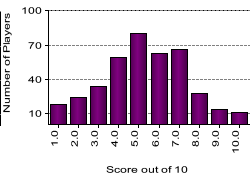Quiz Answer Key and Fun Facts
1. What is the meaning of the acronym CSMA/CD, which is used in almost all network topologies?
2. Vampire taps and yellow cable are most often associated with which network?
3. How is FDDI, a type of ring topology, pronounced?
4. What type of connector is used in a 10base2 network?
5. What does the 802 of the various network standards stand for?
6. Which of the following is not a network topology?
7. What does the "F" stand for in 10baseF and the "T" stand for in 10baseT?
8. Which of the following is the least like the other three?
9. What is the difference between an RG-8 and a RG-59 coaxial cable?
10. In most ring topologies, how is it determined which node has command of the line?
Source: Author
humanimal77
This quiz was reviewed by FunTrivia editor
crisw before going online.
Any errors found in FunTrivia content are routinely corrected through our feedback system.

